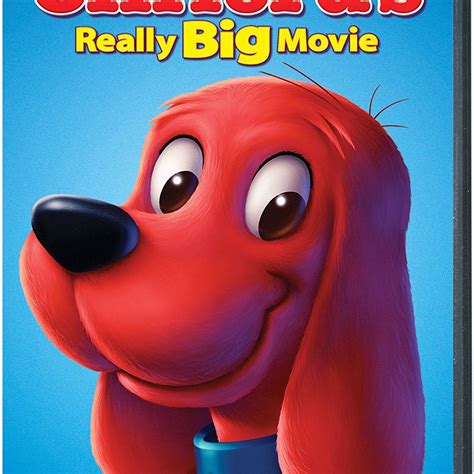The world of animated films has given us some truly unforgettable canine characters over the years, and when it comes to dog cartoon films, there’s a rich history to explore. From the early days of animation to the modern computer-generated blockbusters, dogs have been a staple of the genre, often serving as loyal companions, heroes, or even the main protagonists of their stories.
One of the earliest and most iconic dog cartoon characters is Pluto, created by Walt Disney and first appearing in the 1930s. Pluto, also known as Rover, quickly became a beloved figure in the Disney universe, known for his loyalty to Mickey Mouse and his affectionate, playful nature. Over the years, Pluto has appeared in countless animated shorts, films, and even television shows, cementing his place as one of the most recognizable and beloved cartoon dogs.
However, when thinking about fully-fledged dog cartoon films, one of the most iconic examples that comes to mind is “Lady and the Tramp” (1955), another Disney classic. This romantic adventure tells the story of two dogs from different backgrounds who fall in love. Lady, a cocker spaniel from a wealthy family, and Tramp, a street-smart mutt, embark on a series of exciting and often humorous adventures. Their story, including the famous spaghetti kiss, has become a staple of animation history, charming audiences for generations.
The 1960s saw the rise of another beloved canine character with the release of “101 Dalmatians” (1961), also by Disney. This film, based on the novel by Dodie Smith, introduces us to Pongo and Perdita, Dalmatian parents whose adorable puppies are stolen by the villainous Cruella de Vil. The movie follows the heroic efforts of the adult Dalmatians and other animals to rescue their puppies, showcasing themes of family, loyalty, and the unbreakable bond between pets and their owners.
In more recent years, dog cartoon films have continued to evolve, incorporating sophisticated animation techniques and compelling storylines. “Bolt” (2008) is a modern example, telling the story of a white dog who plays a superhero on television but believes he has real superpowers. When Bolt thinks his owner, Penny, is in danger, he sets out on a cross-country journey to save her, accompanied by a pair of disillusioned show cats. The film offers a humorous critique of celebrity culture and the power of believing in oneself.
Another contemporary film that has captured hearts is “The Secret Life of Pets” (2016), which explores what pets do when their owners are away. The movie centers around Max, a terrier whose life is turned upside down by the arrival of Duke, a stray dog. As Max learns to accept Duke, they find themselves lost in the city, facing various obstacles and making unexpected friends, including a fierce rabbit named Snowball. The film provides a fun, imaginative look into the secret lives of pets and the deep bonds of friendship and loyalty they form.
The evolution of dog cartoon films reflects not only advancements in animation technology but also a deepening understanding of the human-animal bond and the roles pets play in our lives. These films often serve as more than just entertainment; they provide insights into empathy, companionship, and the unconditional love that pets offer.
The Impact of Dog Cartoon Films
Beyond their entertainment value, dog cartoon films have a significant impact on popular culture and societal perceptions of pets. They can inspire a love for animals, promote empathy and understanding, and even influence pet ownership trends. For instance, the popularity of certain breeds can surge after they are featured in films or television shows, as was the case with Dalmatians following the release of “101 Dalmatians.”
Moreover, these films can serve as tools for teaching children about responsibility, compassion, and the importance of caring for another living being. The depiction of dogs and other pets as loyal companions and heroes can foster positive attitudes towards animals and encourage children to develop nurturing skills.
Technological Advancements
The development of computer-generated imagery (CGI) has revolutionized the world of animation, allowing for more realistic and detailed portrayals of characters, including dogs. Films like “Beethoven” (1992) and “Homeward Bound: The Incredible Journey” (1993) showcased live-action dog characters, but with the advent of CGI, movies like “Cats & Dogs” (2001) and “Hotel for Dogs” (2009) were able to blend live-action with animated elements, offering new creative possibilities.
The future of dog cartoon films looks promising, with ongoing advancements in animation technology and a constant appetite for stories about our canine companions. As animation continues to evolve, we can expect even more sophisticated and engaging stories about dogs, exploring new themes and delving deeper into the complexities of the human-animal bond.
Conclusion
Dog cartoon films have a special place in the hearts of audiences worldwide, providing entertainment, education, and a glimpse into the wonderful world of our canine companions. From the classic tales of Disney to the modern adventures of today, these films remind us of the joy, loyalty, and love that dogs bring to our lives. As we look forward to the next generation of animated films, one thing is certain – the allure of dog cartoon films will continue to captivate us, celebrating the timeless bond between humans and animals.
What is the significance of dog characters in cartoon films?
+Dog characters in cartoon films often serve as more than just entertaining figures; they symbolize loyalty, friendship, and the deep bond between humans and animals. Their stories can inspire empathy, teach responsibility, and promote a positive attitude towards pets.
How have technological advancements impacted the portrayal of dogs in animated films?
+Technological advancements, particularly in computer-generated imagery (CGI), have allowed for more realistic and detailed portrayals of dogs in animated films. This has enabled creators to produce more engaging and believable stories, enhancing the viewer's experience and emotional connection to the characters.
What role do dog cartoon films play in shaping societal perceptions of pets?
+Dog cartoon films can significantly influence societal perceptions of pets by depicting them as loving companions, highlighting the importance of empathy and care, and sometimes even affecting trends in pet ownership. These films contribute to a cultural narrative that values the human-animal bond and encourages responsible and compassionate pet ownership.
As we conclude our exploration of dog cartoon films, it’s clear that these beloved movies are more than just entertainment; they’re a celebration of the enduring friendship between humans and dogs, offering lessons, laughter, and sometimes even tears, as we journey through the worlds they create. Whether through classic animation or modern CGI, the stories of our canine companions continue to inspire, educate, and captivate audiences around the globe, ensuring that dog cartoon films will remain a cherished part of our cinematic heritage for generations to come.



